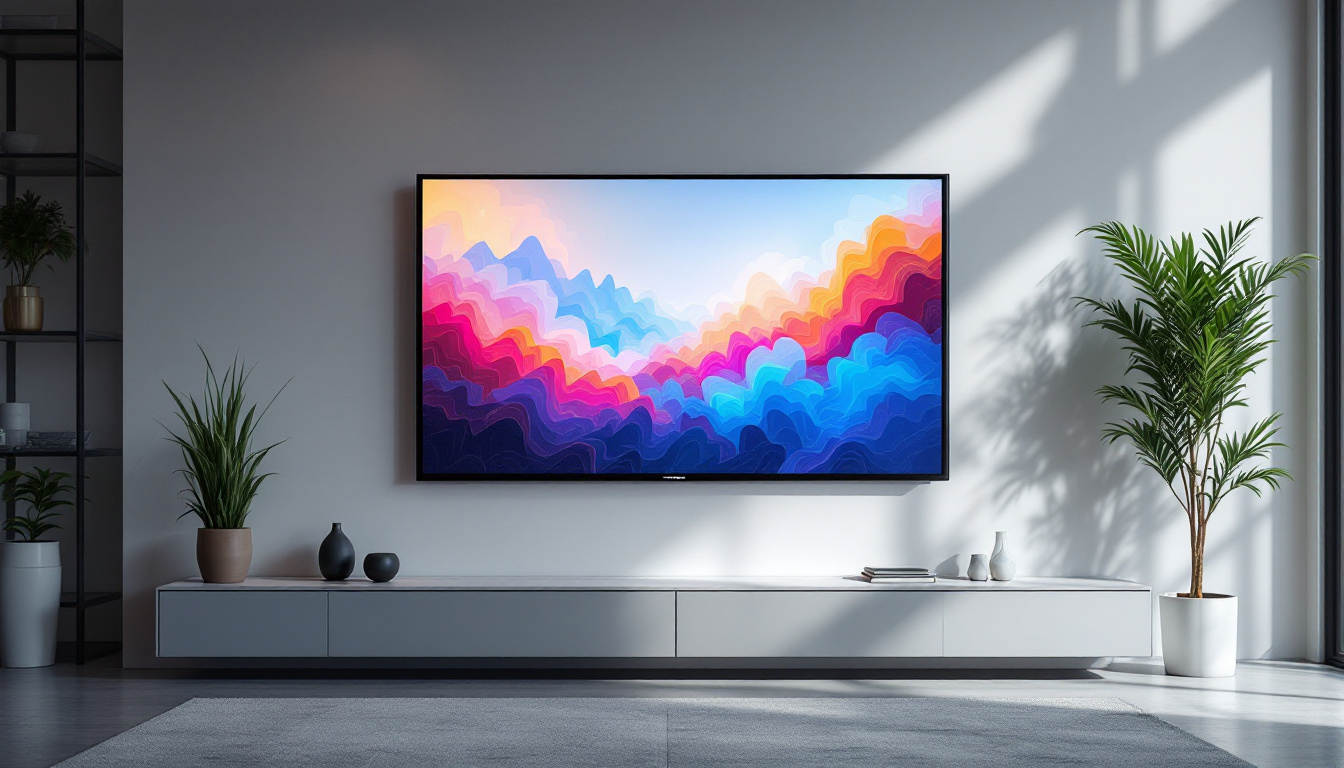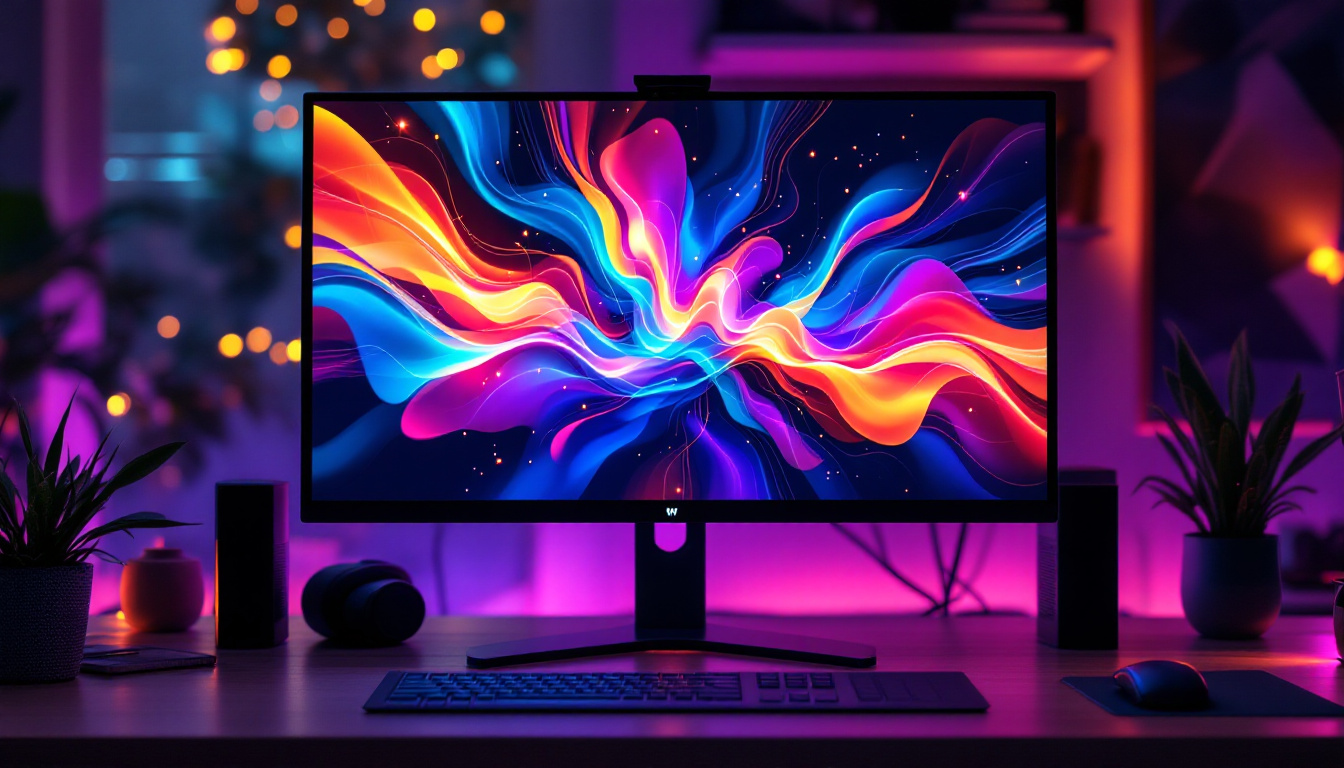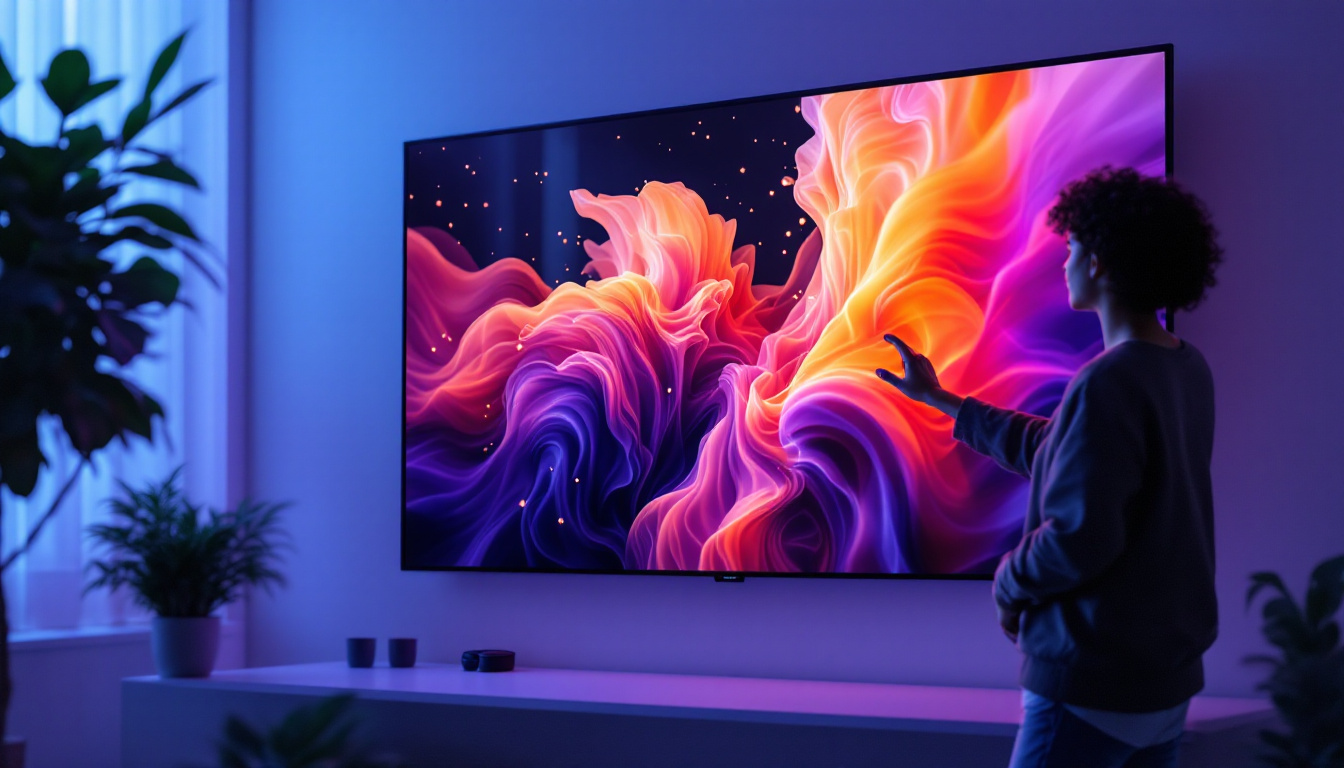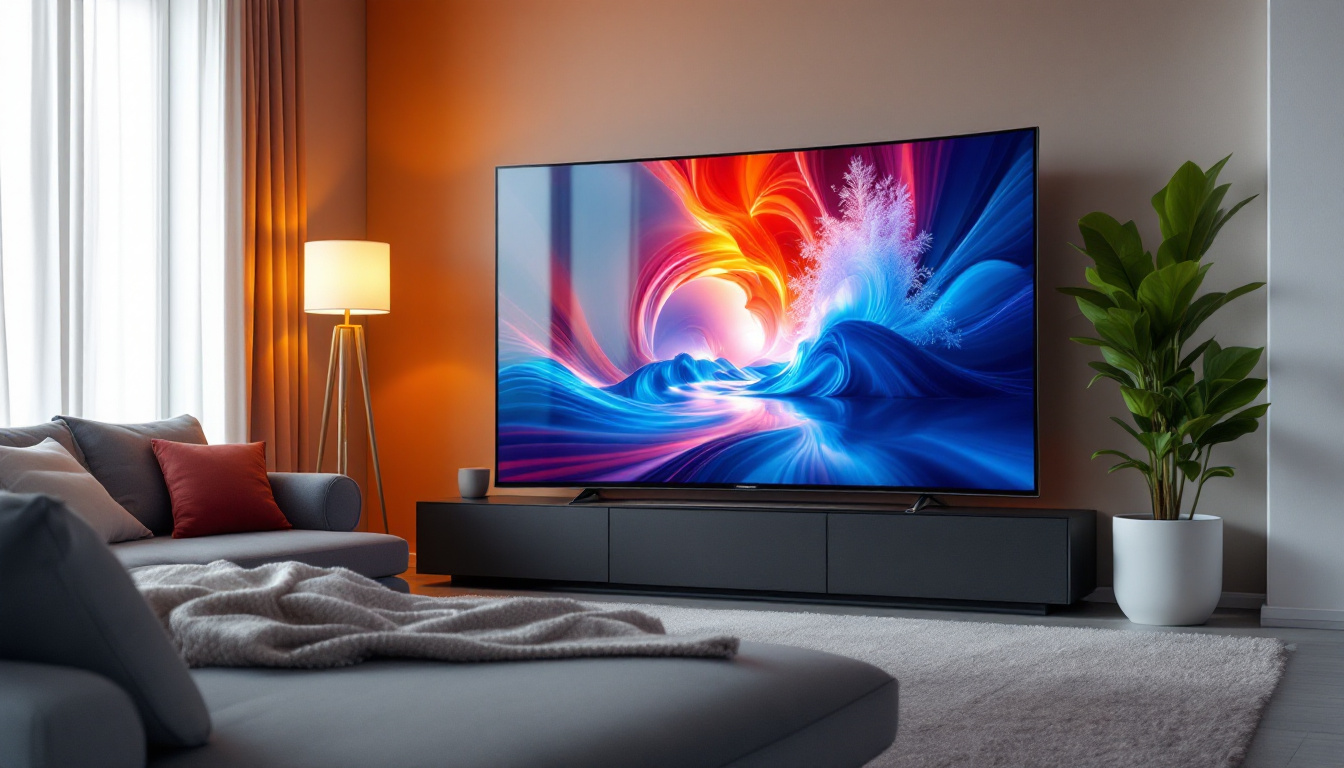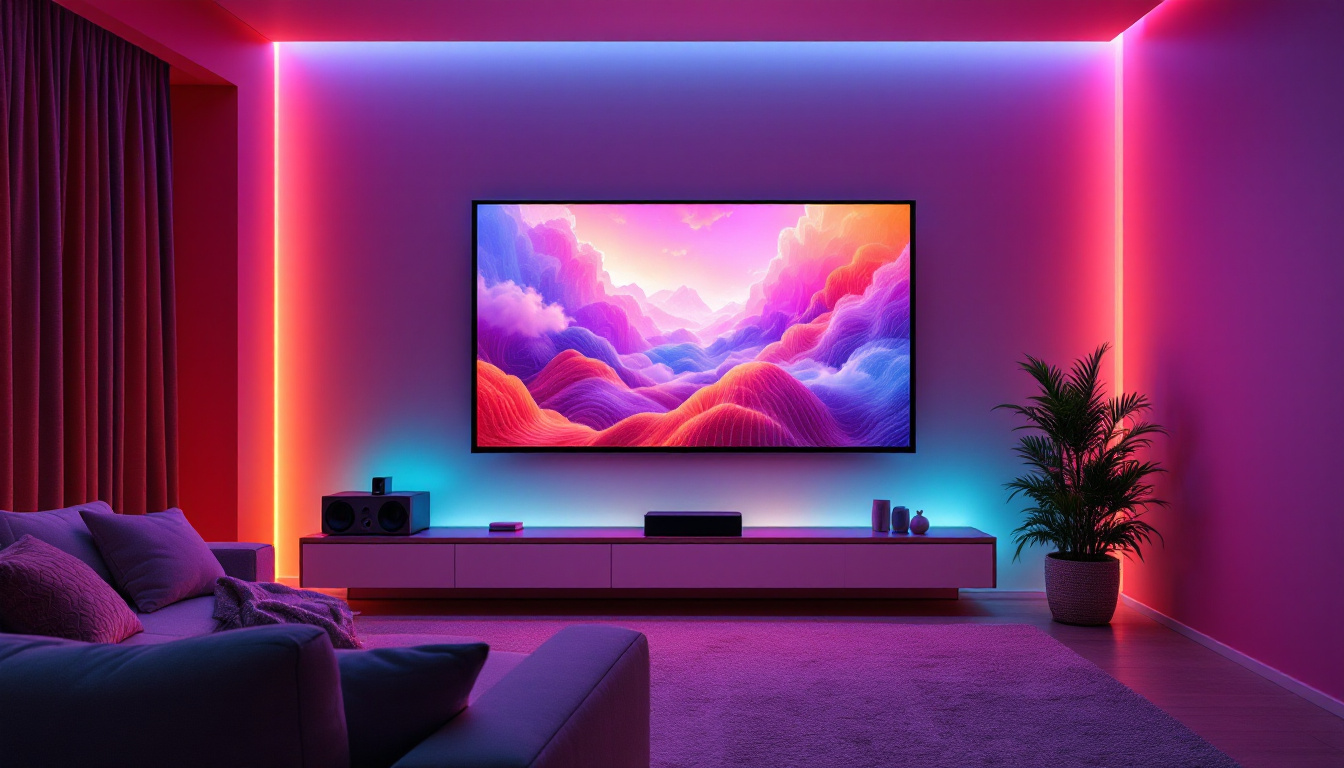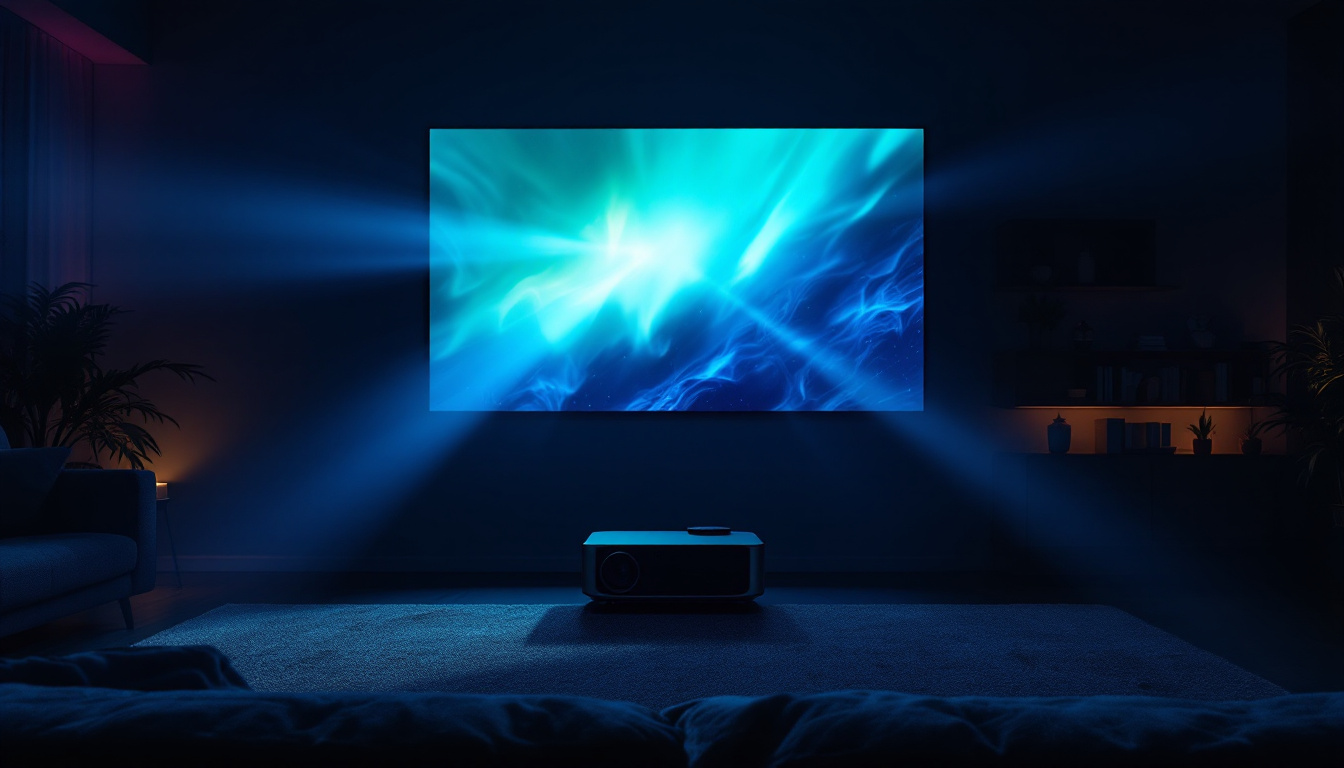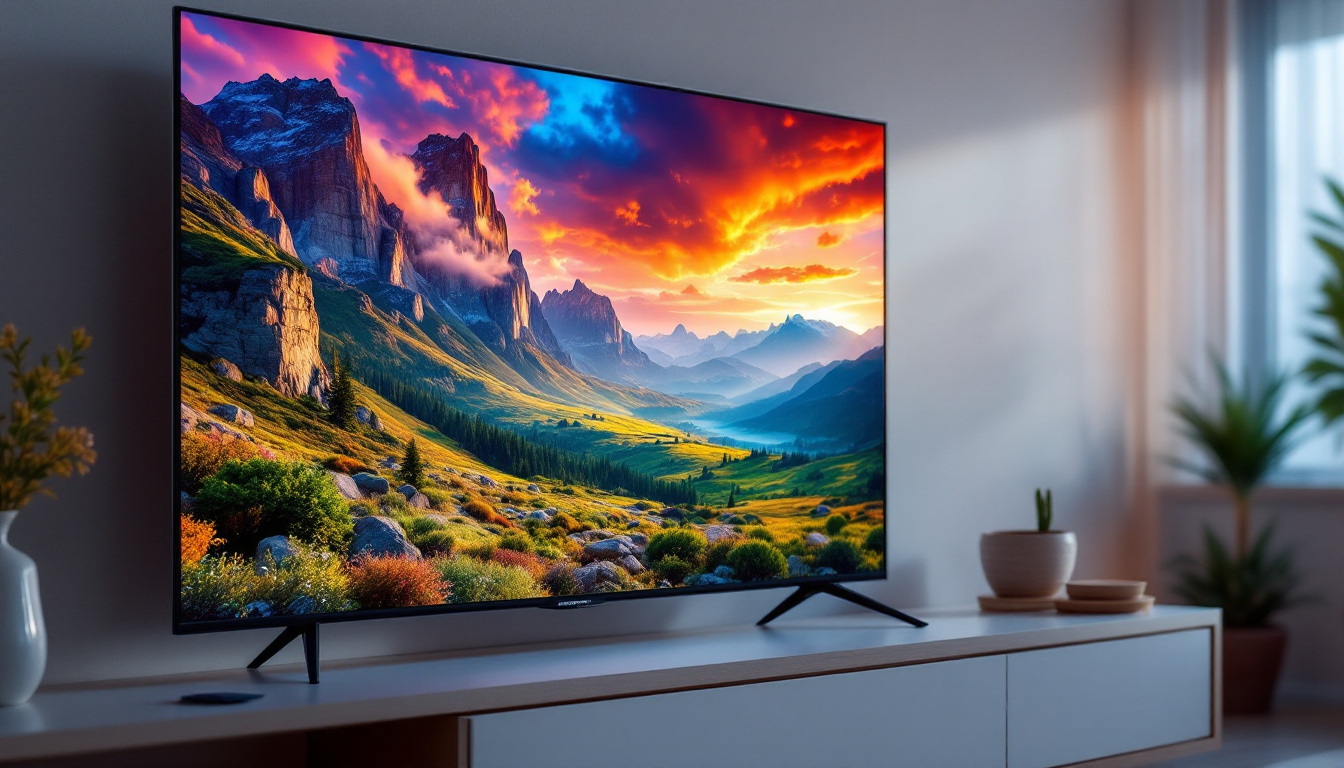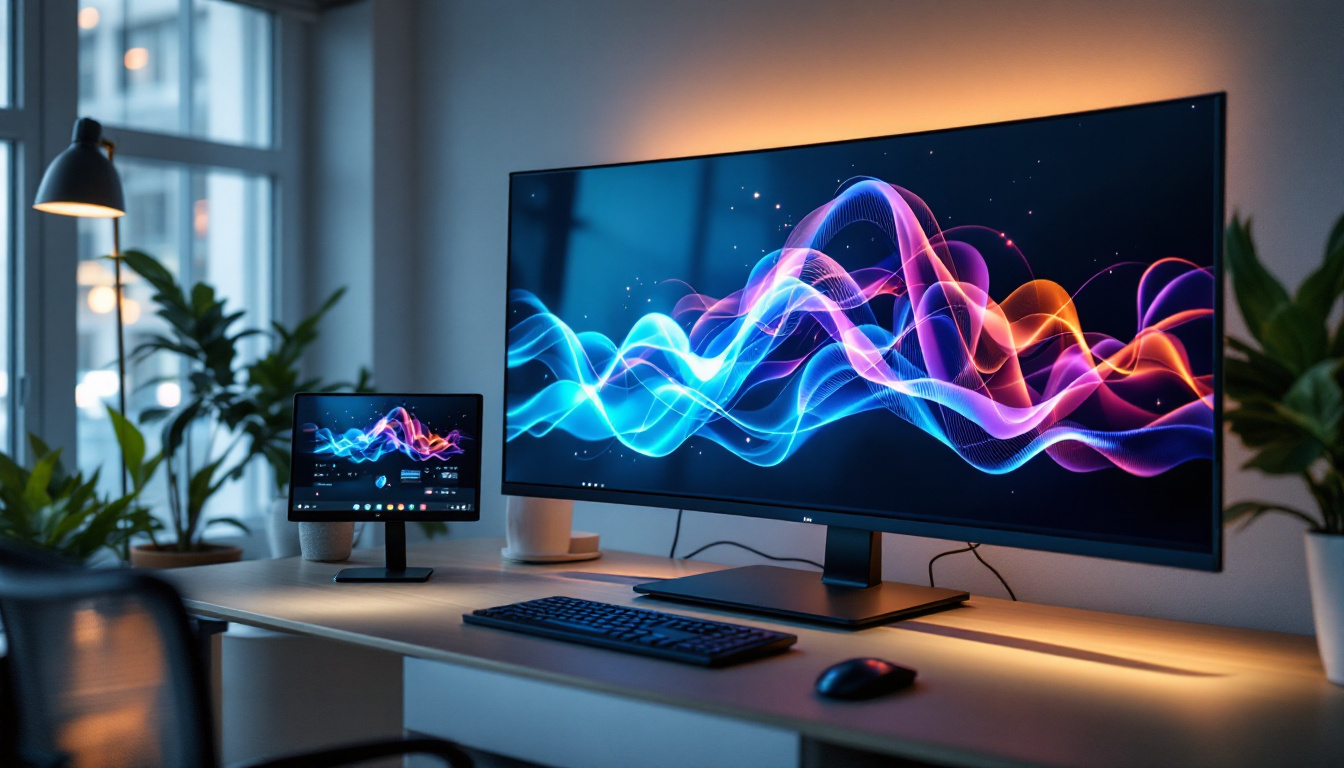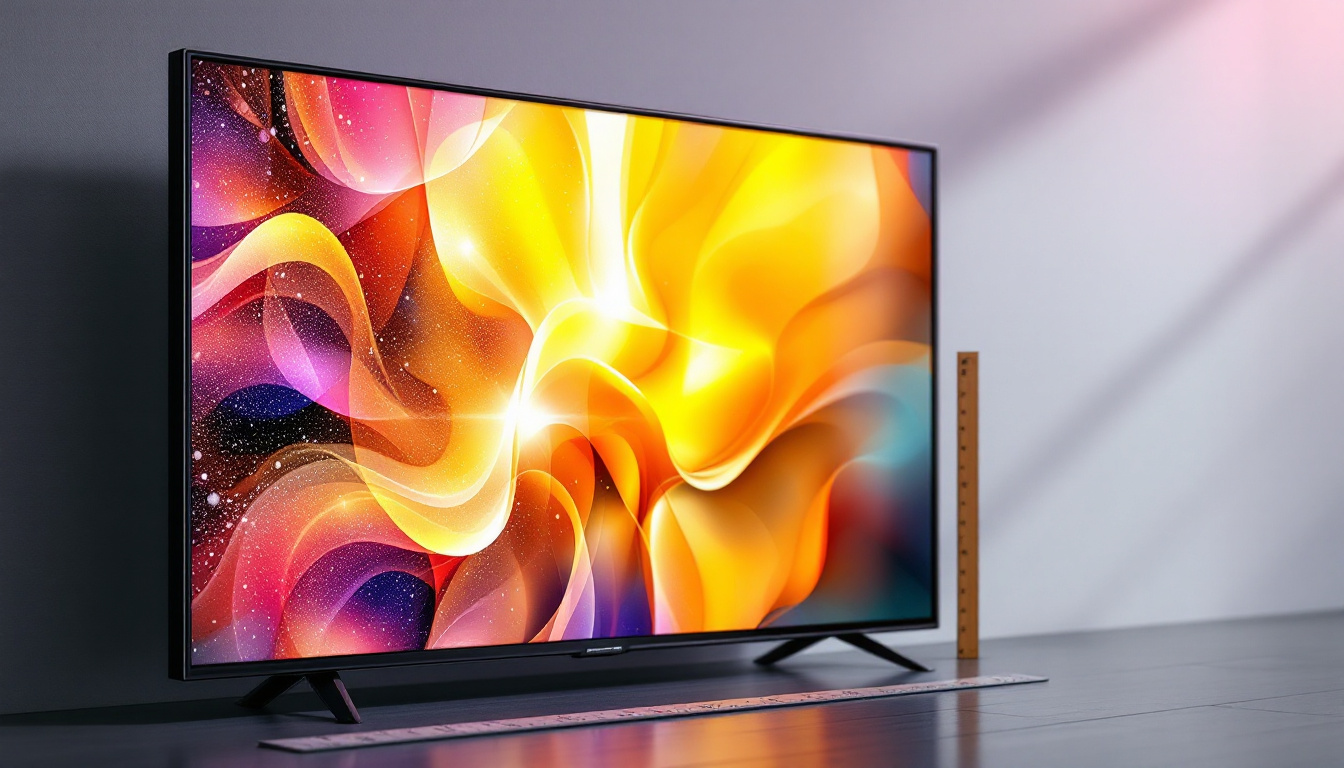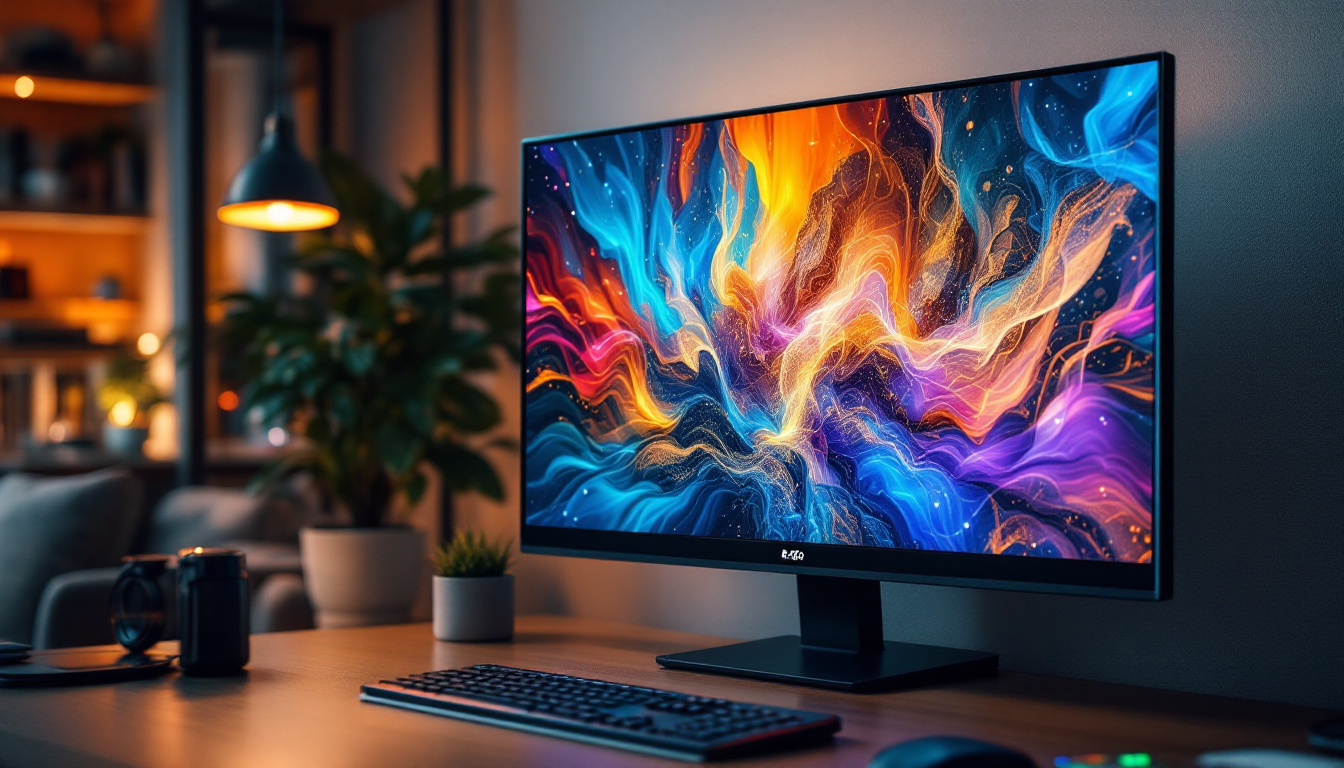Touch Screen TVs: LED Display Explained
In the modern era of technology, touch screen TVs have emerged as a significant innovation, blending the convenience of touch interaction with the high-quality visuals of LED displays. This article delves into the intricacies of touch screen TVs, focusing on how LED technology enhances the viewing experience and the various applications of these devices in everyday life.
Understanding Touch Screen Technology
Touch screen technology has revolutionized the way users interact with devices, providing a more intuitive and engaging experience. Unlike traditional TVs that rely solely on remote controls, touch screen TVs allow users to navigate menus, select options, and even play games with simple finger gestures.
The Mechanics of Touch Screens
Touch screens operate through various technologies, with the most common being capacitive and resistive. Capacitive touch screens use the electrical properties of the human body to detect touch, allowing for multi-touch capabilities. This means that multiple fingers can interact with the screen simultaneously, enabling complex gestures like pinch-to-zoom.
On the other hand, resistive touch screens rely on pressure applied to the screen. This type of technology is often more affordable but does not support multi-touch functionality. Understanding these differences is crucial when selecting a touch screen TV, as it affects the overall user experience. Additionally, there are other variations like infrared and optical touch screens, which utilize light sensors to detect touch. These technologies can offer unique advantages, such as improved durability and resistance to environmental factors, making them suitable for outdoor applications.
Applications of Touch Screen TVs
Touch screen TVs are not limited to just entertainment; they serve a variety of purposes across different sectors. In educational settings, touch screen TVs facilitate interactive learning, allowing students to engage with content dynamically. They can display educational software, videos, and even allow students to participate in quizzes directly on the screen. This interactive approach not only enhances retention but also caters to various learning styles, making education more accessible and enjoyable for all students.
In the corporate world, touch screen TVs enhance presentations and meetings. They enable seamless collaboration, allowing multiple users to interact with the display, annotate documents, and brainstorm ideas in real time. This interactivity fosters a more engaging and productive environment. Furthermore, touch screen TVs are increasingly being integrated into smart office solutions, where they can connect with other devices and software, streamlining workflows and improving communication among teams. As businesses continue to adapt to remote work and digital collaboration, the role of touch screen technology is likely to expand even further, making it an essential tool for modern workplaces.
Exploring LED Display Technology
LED (Light Emitting Diode) technology has become the gold standard for modern televisions, providing superior picture quality and energy efficiency. Understanding how LED displays work is essential to appreciate their role in touch screen TVs.
How LED Displays Function
LED displays utilize tiny diodes that emit light when an electric current passes through them. This technology allows for brighter screens with vibrant colors and deeper blacks compared to traditional LCD screens that use fluorescent backlighting. The result is a more immersive viewing experience, whether watching movies, playing games, or browsing the internet.
Moreover, LED displays are known for their thin profiles, making them aesthetically pleasing and easy to mount on walls. This sleek design complements modern home decor while providing high-quality visuals. Additionally, advancements in LED technology have led to the development of OLED (Organic Light Emitting Diode) displays, which take the benefits of LED a step further by allowing each pixel to emit its own light. This results in even greater contrast ratios and a wider color gamut, further enhancing the viewing experience.
Benefits of LED Displays in Touch Screen TVs
Integrating LED technology into touch screen TVs offers numerous advantages. Firstly, the brightness and color accuracy of LED displays enhance the touch interaction experience. Users can enjoy vivid visuals even in well-lit environments, making it ideal for various settings. The responsiveness of touch screen technology combined with the clarity of LED displays allows for seamless navigation through menus and applications, making it a favorite for interactive presentations and home entertainment systems alike.
Additionally, LED displays are energy-efficient, consuming less power than traditional display technologies. This aspect not only reduces electricity bills but also contributes to a more sustainable environment. With increasing awareness of energy consumption, consumers are increasingly opting for energy-efficient devices. Furthermore, the longevity of LED displays means they often outlast their counterparts, providing excellent value over time. Many manufacturers now offer warranties that reflect this durability, ensuring that consumers can enjoy their investment for years to come. As technology continues to evolve, the integration of smart features with LED touch screen TVs is becoming more prevalent, allowing for voice control and connectivity with other smart home devices, further enhancing the user experience.
Comparing Touch Screen TVs to Traditional TVs
When considering a new television, potential buyers often face the dilemma of choosing between touch screen TVs and traditional models. Each option has its unique advantages and drawbacks, influencing the decision-making process.
User Interaction
One of the most significant differences lies in user interaction. Traditional TVs typically rely on remote controls, which can sometimes be cumbersome and less intuitive. Touch screen TVs, on the other hand, provide a more hands-on approach, allowing users to interact directly with the screen. This direct engagement is particularly beneficial for applications like gaming and educational content. For instance, children can easily navigate through educational apps, making learning more interactive and enjoyable. Additionally, touch screen TVs often support multi-touch functionality, enabling multiple users to engage simultaneously, which can be a fun way to play games or collaborate on projects.
Content Accessibility
Touch screen TVs often come equipped with smart features, enabling users to access a wide range of streaming services and apps directly from the screen. This level of accessibility can enhance the overall viewing experience, making it easier to find and enjoy content without the need for additional devices. Many models also integrate voice control capabilities, allowing users to search for shows or adjust settings simply by speaking, further streamlining the user experience.
In contrast, traditional TVs may require external devices like streaming boxes or gaming consoles to access similar content, which can complicate the user experience. The all-in-one nature of touch screen TVs simplifies this process, appealing to tech-savvy consumers. Furthermore, touch screen TVs often feature customizable interfaces, enabling users to arrange their favorite apps and channels in a way that suits their viewing habits. This personalization can make it easier to access preferred content quickly, enhancing the overall enjoyment of the television experience. As technology continues to evolve, the integration of advanced features in touch screen TVs seems poised to redefine how we interact with our entertainment systems.
Choosing the Right Touch Screen TV
With the growing popularity of touch screen TVs, selecting the right model can be overwhelming. Several factors should be considered to ensure the chosen device meets the user’s needs and preferences.
Screen Size and Resolution
Screen size is a critical factor when choosing a touch screen TV. Larger screens provide a more immersive experience, especially for gaming and movie watching. However, the size should also be appropriate for the viewing space to avoid discomfort.
Resolution is equally important. Modern touch screen TVs typically offer 4K resolution, providing stunning clarity and detail. For users who prioritize picture quality, investing in a higher resolution model can significantly enhance the viewing experience.
Touch Technology
As previously mentioned, the type of touch technology used in the TV can impact usability. For those who frequently use touch interactions, a capacitive touch screen is often preferable due to its responsiveness and multi-touch capabilities. Conversely, if budget constraints are a concern, a resistive touch screen may suffice for basic interactions.
Future Trends in Touch Screen TVs
The future of touch screen TVs is promising, with continuous advancements in technology paving the way for innovative features and improved user experiences. As manufacturers invest in research and development, several trends are emerging that could shape the landscape of touch screen TVs.
Integration with Smart Home Systems
One of the most exciting trends is the integration of touch screen TVs with smart home systems. As more households adopt smart devices, the ability to control lighting, security systems, and appliances directly from the TV screen will become increasingly valuable. This seamless integration will enhance convenience and create a centralized hub for home management.
Enhanced Interactivity and Content Creation
Another trend is the focus on enhanced interactivity. Future touch screen TVs may incorporate advanced features such as augmented reality (AR) and virtual reality (VR), allowing users to engage with content in entirely new ways. This could revolutionize gaming, education, and even shopping experiences, making them more immersive and enjoyable.
Conclusion
Touch screen TVs represent a significant advancement in television technology, combining the interactive capabilities of touch screens with the superior visual quality of LED displays. As consumers increasingly seek devices that offer both functionality and entertainment, touch screen TVs are poised to become a staple in homes and businesses alike.
Understanding the mechanics of touch screen technology, the benefits of LED displays, and the various applications of these devices can help consumers make informed decisions. With continuous advancements on the horizon, the future of touch screen TVs looks bright, promising even more innovative features and enhanced user experiences.
Whether for entertainment, education, or business, touch screen TVs are redefining how users interact with visual media, making them an exciting addition to the technological landscape.
Discover LumenMatrix’s Innovative LED Displays
Ready to elevate your viewing experience with the latest in touch screen TV technology? LumenMatrix is at the forefront of LED display innovation, offering a wide array of solutions from Indoor and Outdoor LED Wall Displays to specialized options like Vehicle and Sports LED Displays. Embrace the future of visual communication with our captivating and energy-efficient LED modules. Whether for business, education, or entertainment, our displays are designed to make a lasting impression. Check out LumenMatrix LED Display Solutions today and transform your space with unparalleled clarity and vibrancy.




